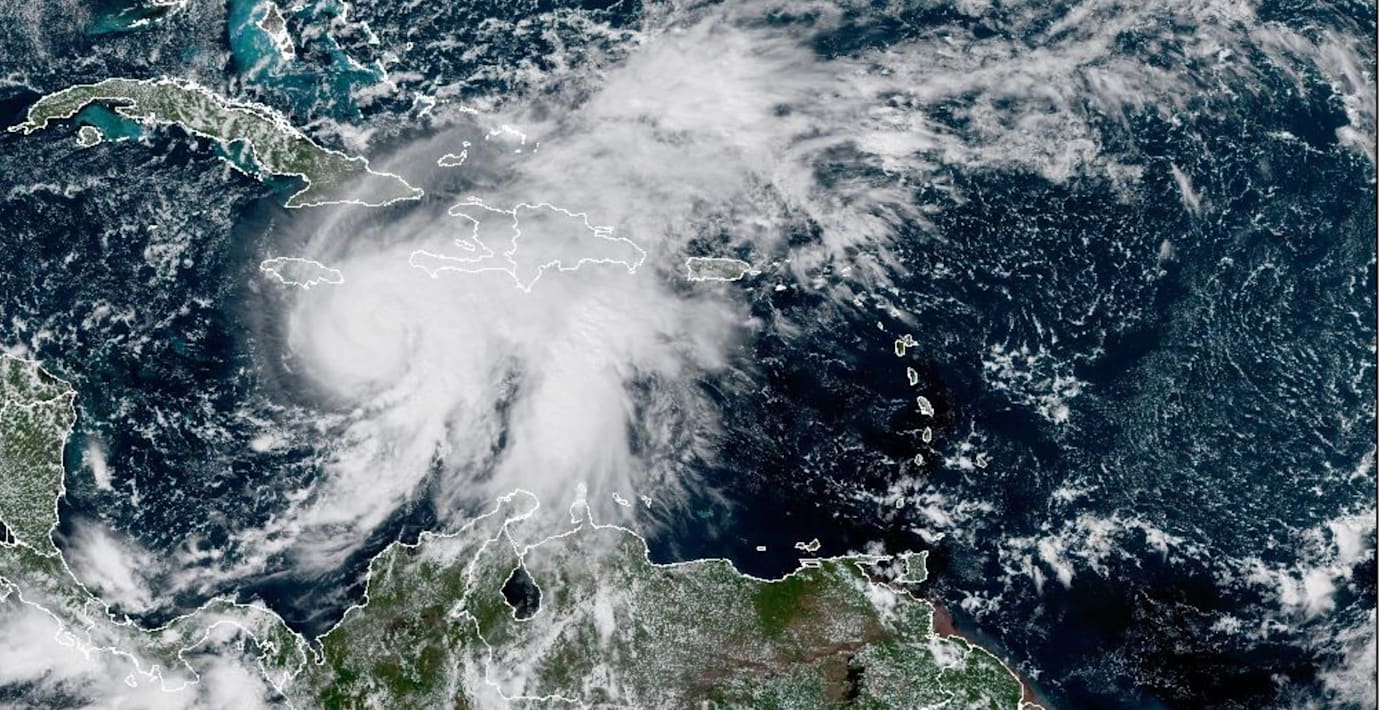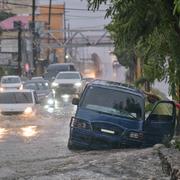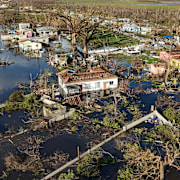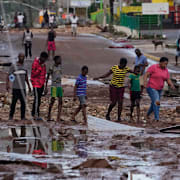
Orkanen Melissa växer i styrka – närmar sig Jamaica
Orkanen Melissa som rör sig över Karibiska havet mot bland annat Jamaica växer snabbt i styrka, skriver USA Today. Orkanen är just nu kategori tre på den femgradiga skalan men väntas kunna växa till kategori fem, med vindstyrkor på över 70 meter per sekund.
Orkanen har redan orsakat minst tre dödsfall på Haiti och skadat minst 200 hem i grannlandet Dominikanska republiken. Där står också en halv miljon människor utan dricksvatten efter orkanens framfart.
bakgrund
Saffir–Simpson scale
Wikipedia (en)
The Saffir–Simpson hurricane wind scale (SSHWS) is a tropical cyclone intensity scale that classifies hurricanes—which in the Western Hemisphere are tropical cyclones that exceed the intensities of tropical depressions and tropical storms—into five categories distinguished by the intensities of their sustained winds. This measuring system was formerly known as the Saffir–Simpson hurricane scale, or SSHS.
To be classified as a hurricane, a tropical cyclone must have one-minute-average maximum sustained winds at 10 m (33 ft) above the surface of at least 74 mph (64 kn, 119 km/h; Category 1). The highest classification in the scale, Category 5, consists of storms with sustained winds of at least 157 mph (137 kn, 252 km/h). The classifications can provide some indication of the potential damage and flooding a hurricane will cause upon landfall.
The Saffir–Simpson hurricane wind scale is based on the highest wind speed averaged over a one-minute interval 10 m above the surface. Although the scale shows wind speeds in continuous speed ranges, the US National Hurricane Center and the Central Pacific Hurricane Center assign tropical cyclone intensities in 5-knot (kn) increments (e.g., 100, 105, 110, 115 kn, etc.) because of the inherent uncertainty in estimating the strength of tropical cyclones. Wind speeds in knots are then converted to other units and rounded to the nearest 5 mph or 5 km/h.
The Saffir–Simpson hurricane wind scale is used officially only to describe hurricanes that form in the Atlantic Ocean and northern Pacific Ocean east of the International Date Line. Other areas use different scales to label these storms, which are called cyclones or typhoons, depending on the area. These areas (except the JTWC) use three-minute or ten-minute averaged winds to determine the maximum sustained wind speed, creating an important difference which frustrates direct comparison between maximum wind speeds of storms measured using the Saffir–Simpson hurricane wind scale (usually 14% more intense) and those measured using a ten-minute interval (usually 12% less intense).
There is some criticism of the SSHWS for not accounting for rain, storm surge, and other important factors, but SSHWS defenders say that part of the goal of SSHWS is to be straightforward and simple to understand. There have been proposals for the addition of higher categories to the scale, which would then set a maximum cutoff for Category 5, but none have been adopted as of October 2025.
Omni är politiskt obundna och oberoende. Vi strävar efter att ge fler perspektiv på nyheterna. Har du frågor eller synpunkter kring vår rapportering? Kontakta redaktionen



